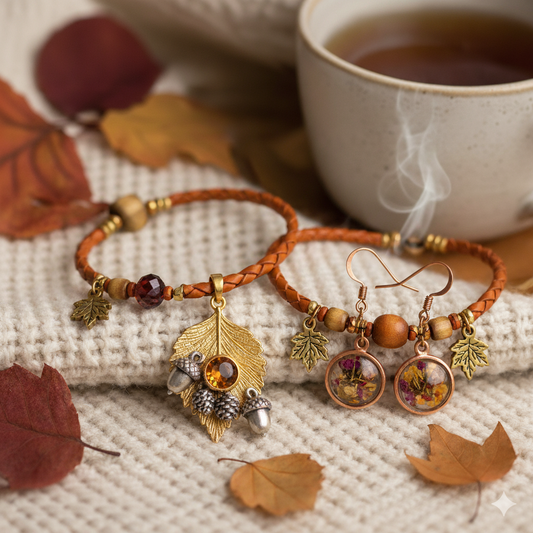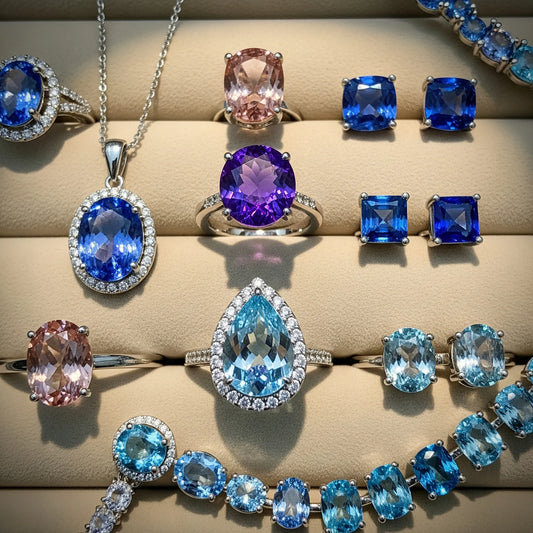Ring Size Guide: How to Find Your Perfect Fit
Choosing a ring is a meaningful experience, whether shopping for an engagement ring, a wedding band, or a special gift. But even the most beautiful ring loses its magic if it doesn’t fit just right.
At Diamovida, everyone deserves jewellery that feels as perfect as it looks. This comprehensive guide will help you confidently determine your ring size, understand sizing charts and conversions, and avoid common mistakes so that you can find your perfect fit every time.
Why Ring Size Matters: Comfort and Confidence
A well-fitted ring is more than just comfortable—it’s secure, stylish, and worry-free. Rings that are too tight can be uncomfortable or even impossible to wear, while loose rings risk slipping off and getting lost.
Ensuring the perfect ring size means you can confidently wear your jewellery, knowing it’s both comfortable and safe.
How to Measure Your Ring Size at Home
You don’t need special tools to measure your ring size accurately.
Here are a few easy methods you can try at home:
1. The String or Paper Method
2. Measure a Current Ring
Tips for Accurate Measurement:
Understanding the Ring Sizing Chart
A ring sizing chart is a handy tool that converts your measurements into standard ring sizes. At Diamovida, our sizing chart includes both circumference (the length around your finger) and diameter (the width across your finger), making it easy to find your match.
| Circumference (mm) | Diameter (mm) | US/Canada Size |
|---|---|---|
| 44.2 | 14.1 | 3 |
| 46.8 | 14.9 | 4 |
| 49.3 | 15.7 | 5 |
| 51.9 | 16.5 | 6 |
| 54.4 | 17.3 | 7 |
| 57.0 | 18.1 | 8 |
| 59.5 | 18.9 | 9 |
If you’re between sizes, we recommend sizing up for comfort.
Differences in Sizing Across Men’s and Women’s Rings
Ring sizes are universal—there is no separate system for men’s and women’s rings. The main differences typically come down to style and width:
-
Style & Width:
Men’s rings are often wider and chunkier, while women’s are slimmer and more delicate. A wider band may feel tighter, so you might want to size up slightly for comfort.
-
Sizing Numbers:
The same size number (e.g., US 7) corresponds to the same internal diameter and circumference for everyone, regardless of gender.
-
Fit:
Always consider the width of the band and your comfort.
International Ring Size Conversion: US, UK, EU, and More
Ring sizes can differ internationally. If you’re shopping for someone overseas or using a chart from another country, use this quick conversion table:
| US/Canada | UK | Europe (EU) | Japan |
|---|---|---|---|
| 5 | J 1/2 | 49 | 9 |
| 6 | L 1/2 | 52 | 12 |
| 7 | N 1/2 | 54 | 14 |
| 8 | P 1/2 | 57 | 16 |
When in doubt, consult our team for personalised assistance.
Pro Tips for Getting the Perfect Ring Size
-
If your knuckle is much larger than the base of your finger, measure both and choose a size in between.
-
Consider the ring’s width: wider bands may require a slightly larger size for comfort.
-
If the ring is a surprise, borrow a ring your partner wears on the correct finger and measure it.
-
When ordering custom or eternity bands, consult our experts for guidance and precise sizing is especially important.
Common Mistakes to Avoid When Sizing Your Ring
-
Measuring at the Wrong Time of Day or When Your Hands Are Cold
Your fingers are typically at their smallest in the morning and when exposed to cold temperatures, as cold causes them to contract. By afternoon or evening, fingers can swell due to activity and heat. For the most accurate fit, measure your finger later in the day when your fingers are at their largest.
-
Guessing Your Size or Relying on Old Measurements
Avoid estimating your ring size or using outdated measurements. Finger size can change over time due to weight fluctuations, health conditions, or aging.
-
Not Accounting for Seasonal Changes
Fingers tend to swell in hot weather and shrink in cold weather. Always consider how temperature affects your fingers—measure when your hands are at a normal, comfortable temperature.
-
Overlooking Differences Between Your Dominant and Non-Dominant Hands
Your dominant hand is often slightly larger than your non-dominant hand. Always measure the finger on the hand where you plan to wear the ring.
Why Professional Ring Sizing Is the Most Reliable Method
-
The Benefits of Professional Sizing
Getting your finger sized by a professional jeweller is the most accurate way to determine your ring size. Jewellers use precise tools and have the expertise to account for factors like temperature, time of day, and finger shape, ensuring a perfect fit.
-
What to Expect During In-Store Sizing
During an in-store sizing, a jeweller will use a set of metal or plastic ring sizers to measure your finger. The process is quick and painless—simply slip on different sizes until you find the most comfortable fit. The jeweller may also ask about your lifestyle and how you plan to wear the ring to help recommend the best size.
-
The Importance of Trying on Different Bandwidths and Shapes
Rings come in various widths and shapes, affecting how they feel on your finger. Wider bands tend to fit more snugly and may require you to go up half a size, while thinner bands feel looser. Try on rings with different widths and profiles to find what feels best for you. A professional jeweller will guide you through this process to ensure your final choice is comfortable and secure.
Ring Resizing: What You Need to Know
How Much Can a Ring Be Resized?
Most rings can be safely resized up or down by about two to three sizes, depending on the metal and the design. Precious metals like gold and platinum are typically the easiest to resize, while resizing is more limited for rings with intricate settings or certain alloys. If you need a dramatic size change beyond this range, a jeweller may recommend remaking the ring to preserve its integrity and appearance. Consider opting for Diamovida's Jewellery Repairs Where each jewellery is treated with intricate care.
Rings That Are Difficult or Impossible to Resize
Some rings present significant challenges or cannot be resized at all:
Eternity Bands: These have gemstones set all the way around, leaving no plain metal to cut or stretch, making resizing nearly impossible without disrupting the design.
Tungsten, Titanium, and Ceramic Rings: These materials are extremely hard or brittle, so resizing can crack or damage the ring.
Intricate or Engraved Designs: Rings with complex patterns, tension settings, or delicate engravings may be at risk of damage during resizing and are often best left as-is or remade in a new size
Cost and turnaround time expectations
Cost: The price for resizing a ring varies depending on the complexity, metal, and whether gemstones are involved. Simple resizing (such as a plain gold band) may cost $50–$150, while resizing rings with intricate settings or additional stones can range from $80 to $250 or more.
Turnaround Time: Many local jewellers can complete a straightforward resize within a day or two, though more complex jobs or busy periods may require up to a week. If shipping or additional repairs are needed, expect a turnaround time of up to two to three weeks.
Frequently Asked Questions (FAQs)
What if I'm between two sizes?
If you find yourself between two ring sizes, it’s generally best to choose the larger size. Fingers can swell due to heat, activity, or time of day, and a slightly looser ring is more comfortable and easier to adjust if needed. You can also use ring sizing beads or a ring guard for a more secure fit.
Can all rings be resized?
Not all rings can be resized. While most plain metal bands can be adjusted up or down by a couple of sizes, rings with eternity settings, tension settings, intricate designs, or made from materials like tungsten or ceramic are often difficult or impossible to resize. Always consult with a professional jeweller before purchasing if resizing may be necessary.
How accurate are printable ring size guides?
Printable ring size guides can be a helpful starting point, but they are not as accurate as professional sizing. Printing, paper thickness, and user errors can lead to incorrect measurements. Use a physical ring sizer or visit a jeweller for professional sizing for the most reliable results.
Is it better for a ring to be tighter or looser?
A ring should fit snugly but comfortably—tight enough that it won’t fall off, but loose enough to slide over your knuckle with a little resistance. If you’re unsure, opt for a slightly looser fit, as your fingers may swell throughout the day or in warm weather.
Explore our rings
Get in Touch for Your Ring Resizing Consultation
Need your ring resized for the perfect fit? Schedule a personalized consultation with our expert jewellers to discuss your resizing options and ensure your treasured piece fits comfortably and securely.
Schedule your consultation
- Choosing a selection results in a full page refresh.
- Opens in a new window.








